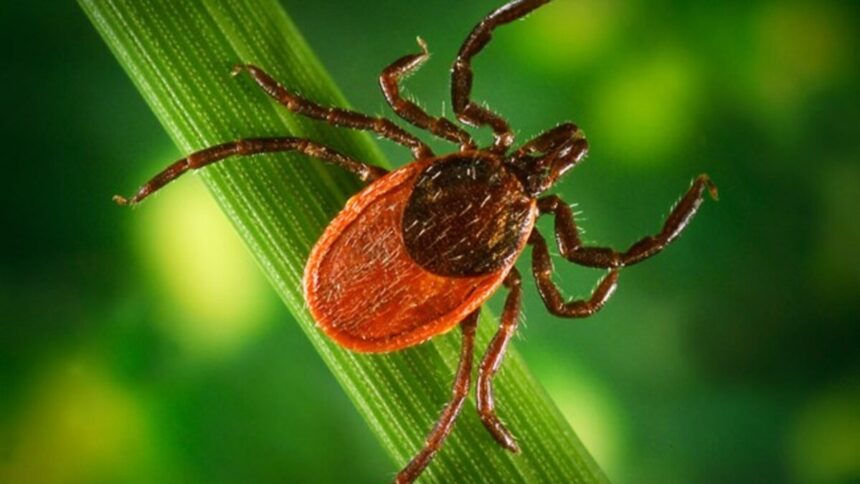As tick-borne diseases become increasingly common, one particular illness has started to gain significant attention in the United States: Babesiosis. This disease, which is making headlines due to its severe impact, is caused by parasites transmitted through tick bites. Here’s an in-depth look at Babesiosis, its symptoms, causes, and prevention methods.
What is Babesiosis?
Babesiosis is a parasitic disease transmitted by the bite of an infected black-legged tick, commonly known as the deer tick. According to the Cleveland Clinic, the disease is caused by single-celled protozoan parasites of the genus Babesia. These parasites enter the bloodstream through the tick bite and then infect and destroy red blood cells, leading to various health complications. While the disease can resemble flu-like symptoms, it can also lead to severe illness, particularly in individuals with weakened immune systems or compromised spleens.
Symptoms of Babesiosis
Symptoms of Babesiosis typically manifest one to four weeks after a tick bite. At first, the symptoms may resemble those of the flu and may comprise:
- High Fever: A sudden and high fever is one of the common early symptoms.
- Fatigue: Extreme tiredness and weakness are prevalent among affected individuals.
- Chills and Sweating: Patients may experience episodes of chills followed by sweating.
- Headache: Persistent headaches are a frequent complaint.
- Muscle and Joint Pain: Body aches and pains can be debilitating.
- Loss of Appetite: A decrease in appetite and nausea often accompany the disease.
- Cough: Although less common, a cough can also occur.
In severe cases, Babesiosis can lead to more alarming symptoms, such as:
- Nausea and Vomiting: Severe gastrointestinal issues may arise.
- Dark Urine: The presence of dark-colored urine can indicate significant health problems.
- Abdominal Pain: Stomach pain and discomfort are possible symptoms.
- Stiff Neck: Difficulty in moving the neck can occur.
- Mood Swings: Altered mental states and mood swings can affect patients.
- Shortness of Breath: Breathing difficulties may become pronounced.
- Jaundice: Jaundice, or yellowing of the eyes and skin, can be an indication of a serious illness..
Causes of Babesiosis
Babesia are protozoan parasites that cause babesiosis. These microscopic organisms are transmitted through the bite of an infected tick. Once inside the body, the parasites invade and multiply within red blood cells. This destruction of red blood cells leads to the various symptoms associated with the disease. In extreme situations, the infection may be fatal, particularly if treatment is delayed.
How to Prevent Babesiosis
Babesiosis must be avoided by removing all potential for tick bites. Here are some effective strategies to protect yourself:
- Maintain Short Grass: Ticks are commonly found in long grass. Keeping your lawn well-maintained and grass shorter than 5 inches can reduce the risk of tick exposure.
- Stick to Clear Trails: When walking in wooded or grassy areas, stay on clear, well-trodden paths to avoid brushing against vegetation where ticks may be present.
- Use Tick Repellents: Apply insect repellents containing DEET on exposed skin and clothing. These repellents can help keep ticks away.
- Put on Protective Clothes: Wear long sleeves, long pants, and closed-toe shoes when you go into places with tall grass or wooded areas. You may further stop ticks from getting to your skin by tucking your jeans into your socks.
- Protect Pets: Use tick prevention products on your pets and regularly check them for ticks, especially after they have been outside.
- Check for Ticks: After spending time outdoors, perform a thorough tick check on yourself and family members. If you find a tick, remove it carefully using tweezers, making sure to remove the entire tick and not leave any parts embedded in the skin.
As Babesiosis becomes a growing concern in America, understanding its symptoms, causes, and preventive measures is crucial for safeguarding your health. By taking proactive steps to prevent tick bites and being vigilant about tick checks, you can significantly reduce your risk of contracting this potentially serious disease. Stay informed and take necessary precautions, especially if you live in or travel to areas where Babesiosis is prevalent.
Alpha-gal syndrome, spread by bites from the Lone Star tick, was originally found primarily in the southeastern United States. As temperatures warm, it’s starting to move north and west
https://t.co/pnDV3m6azP pic.twitter.com/5gFu5RxXRU
— National Geographic (@NatGeo) August 18, 2023By following these guidelines and being aware of the symptoms, you can protect yourself and your loved ones from the risks associated with Babesiosis and other tick-borne diseases.
Read More: Monkeypox Alert: Symptoms, Transmission, and Prevention Measures in India






